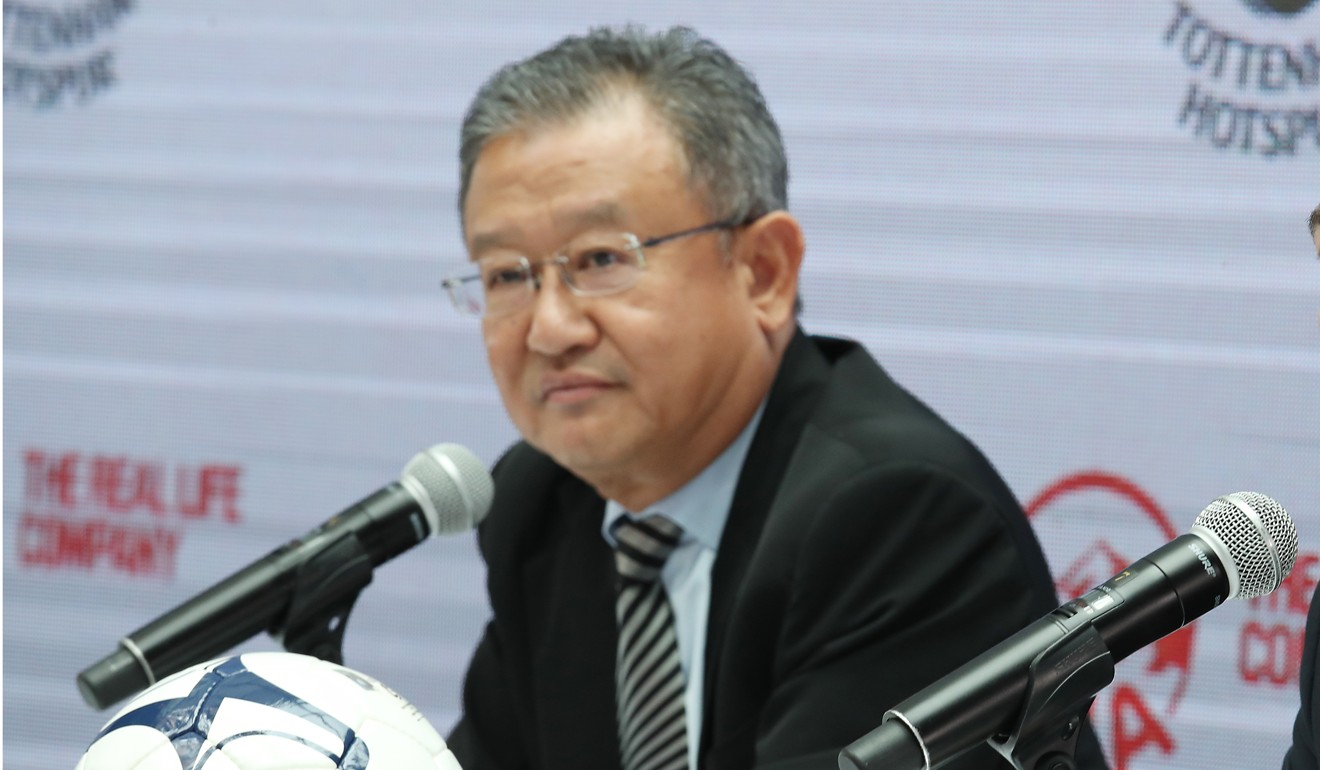
Update | AIA’s first half profit beats estimates; CEO upbeat on China, Hong Kong growth
Analysts say enthusiasm hasn’t diminished yet for mainland China residents to buy insurance policies in Hong Kong
AIA Group, one of the world’s largest life insurers by market value, posted a 42 per cent increase in net profit during the first half, beating market estimates, as the company’s chief executive continued to offer an upbeat outlook for growth in Hong Kong and mainland China – its two biggest markets.
Following the results release, shares of AIA pulled back Friday from recent gains, down 2 cent to close at HK$59.5. The stock hit a new all-time high on Thursday, up 1.8 per cent to finish at HK$60.7.
Net profit rose 42 per cent year on year to US$2.925 billion in the six months ended May 31 on an actual exchange rate basis, compared with US$2.065 billion in the same period a year earlier, AIA Group said in an exchange filing on Friday. The company collects most premiums in local currencies and reports financial results in US dollars.
On a constant exchange rate basis, net profit increased 44 per cent from the same period a year earlier.
The figure is well above a consensus forecast of US$2.46 billion.
Basis earnings per share were 24.4 US cents, up 41 per cent year on year.
AIA’s value of new business (VNB), a key gauge of the insurer’s profitability which measures expected profits from new premiums, increased a record 42 per cent to US$1.75 billion on a constant exchange rate basis.
In particular, Hong Kong and mainland China reported the biggest increase in VNB, up 54 per cent and 65 per cent respectively from a year earlier.
“The China [market] is a star,” Ng Keng Hooi, chief executive and president for AIA, told a media briefing on Friday. “We are pleased with the performance of our China market.”
It was the first time AIA reported its financial results after Ng became the company’s new CEO in June, succeeding Mark Tucker, who is set to join HSBC as group chairman.

“As Chinese people get richer, their spending pattern will change once their income hits a certain level, which could lead to a spike in spending on insurance protection products and other consumer goods,” Ng said.
Combined with the urbanisation trend, these factors will continue to drive the growth in China’s insurance penetration rate and the company’s sales on the mainland, he added.
“[The results are] another beat, as local business demonstrated strong growth,” said Leon Qi, executive director for Daiwa Capital.
Qi said Hong Kong and mainland China operations were the key drivers, as these two markets contributed almost all of the VNB growth.
Chinese authorities have strengthened their crackdown on capital outflows since last year, sparking some concerns whether the restrictions will affect AIA’s sales in Hong Kong, which have benefited from a surge in mainlanders buying insurance in Hong Kong to hedge against the yuan risk and to move assets abroad.
But it appears the enthusiasm from the north hasn’t declined yet.
AIA Hong Kong’s annualised new premiums (ANP) surged 72 per cent to US$1.7 billion in the first half. The figures rose 70 per cent in the fourth quarter of last year and gained 104 per cent in the first quarter.
Ng said AIA will obey relevant regulations closely, while he didn’t think these measures will have too much impact on the company’s business performance.
“I believe [business] will continue to grow,” he said.
As Chinese people get richer, their spending pattern will change once their income hits a certain level
Analysts held similar views. “All the tightening measures have only made the insurance purchase more difficult, but not dampened new sales,” said Lloyd Xu, an analyst for CLSA. “Each time regulators closed a loophole, people found another.”
Wealthy Chinese usually have their own ways to “sneak money out”, he said, as capital outflows might be disguised as a trade of industrial goods, a purchase of precious metal, or even consumption at some foreign e-commerce websites.
Regulators’ restrictions have “ironically” sparked overseas insurance buying by mainland residents, “as they are afraid that this door might be closed sooner or later”, he added.
Qi from Daiwa also said the quality of Hong Kong’s life insurance products and the growing wealth of Chinese should be the “long-term drivers” of cross-border business for Hong Kong’s life insurers.
On Friday, AIA reported it would increase its interim dividend to 25.62 Hong Kong cents per share, up 17 per cent from of 21.9 Hong Kong cents a year ago.
“The increase in dividend payout reflects both the robust performance in first-half and our strong confidence about the company’s growth outlook,” said Ng.
Ng noted that the interim dividend was the highest since AIA’s IPO in October 2010, and 2.3 times the first interim dividend of 11 Hong Kong cents for the first half of 2011.
AIA’s Malaysian market also delivered double-digit VNB growth.
Nonetheless, VNB from Singapore and Thailand posted a 10 per cent and 3 per cent decrease respectively.
AIA was founded in Shanghai in 1919 and is now based in Hong Kong. It currently operates business in 18 markets in the Asia-Pacific region.
In 2010, AIA was listed in Hong Kong after a spin-off from New York-based American International Group (AIG). It was the first foreign organisation to obtain an insurance license in mainland China.

